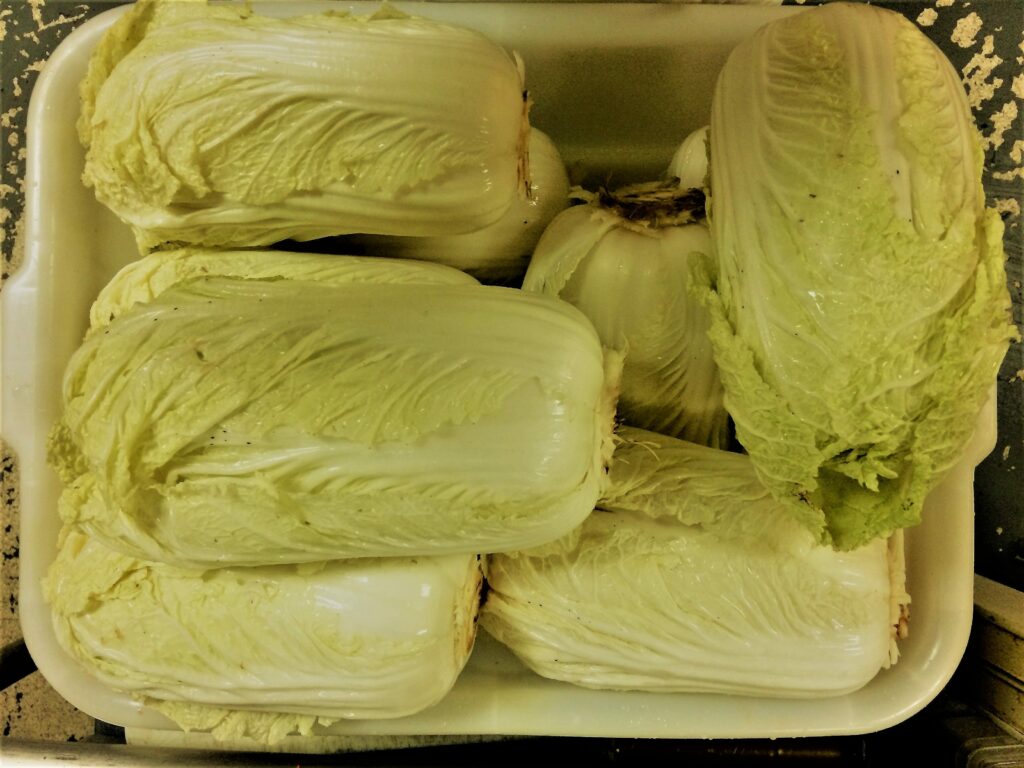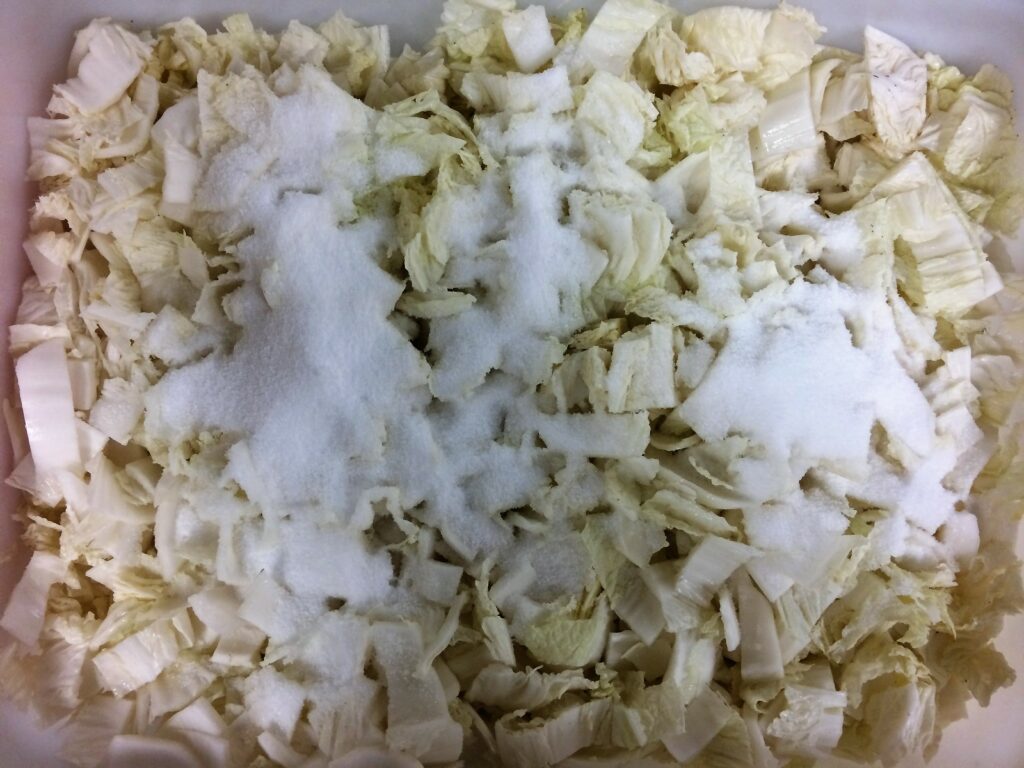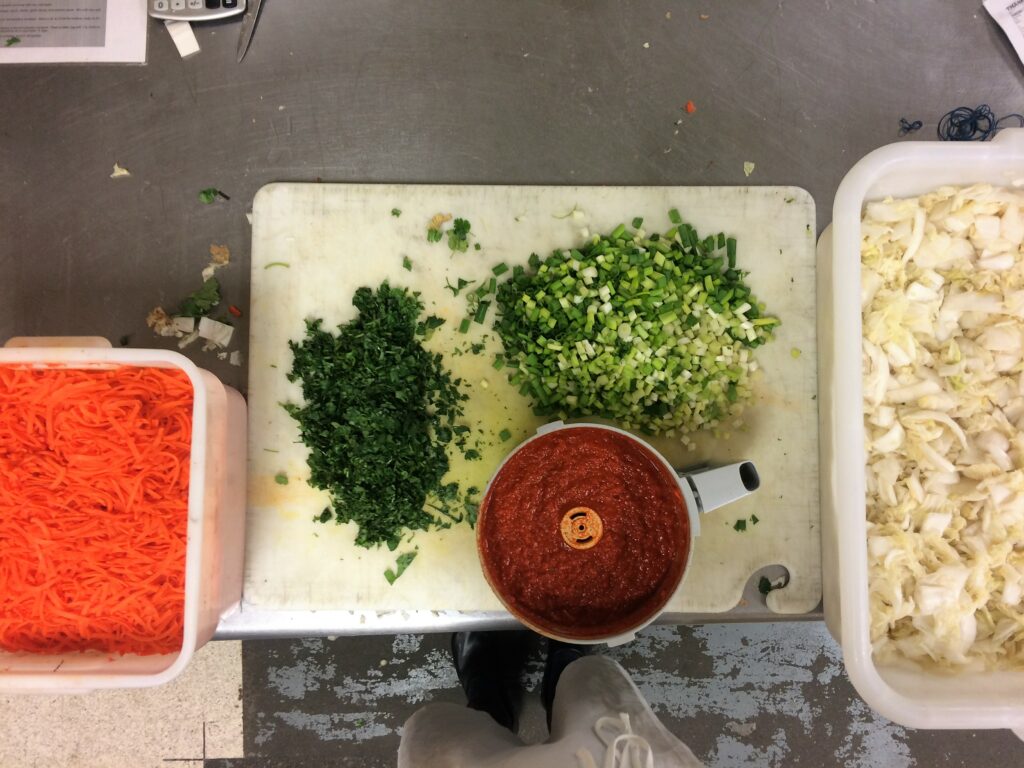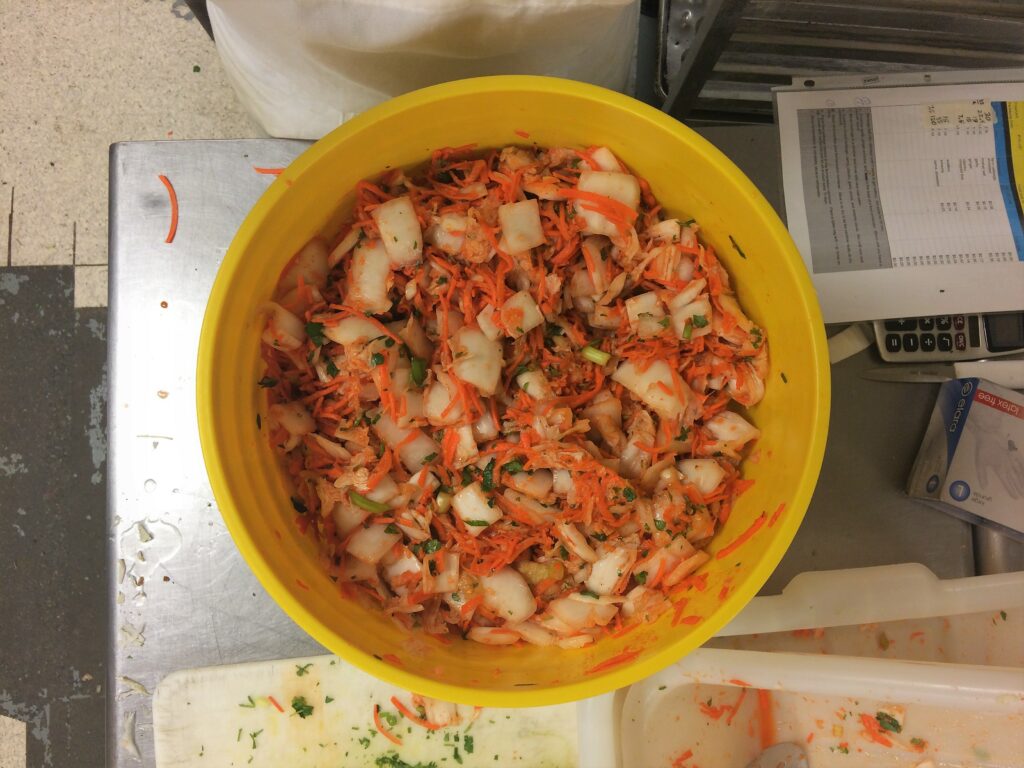By Lauren Young
Maybe you’ve had Sugarsnap’s Sesame Beef Salad Bowl and wondered: what is that distinctive taste? There is a unique flavor in there – a little tangy, a little spicy, but you can’t quite put your finger on it. It’s probably the fermented cabbage concoction known as kimchi! This intense dish is Korea’s most famous contribution to global cuisine.
The main ingredient in Sugarsnap’s homemade kimchi is emiko (napa) cabbage from our farm in Burlington’s Intervale.

This year we grew spring and fall cabbage crops amounting to 530 bed feet of cabbage. The year’s bounty produced over 1000 pounds of cabbage for the kitchen. In addition to cabbage, the scallions, cilantro and often carrots used in this recipe also come from our farm. In 2016 I made more than 100 pounds of kimchi at Sugarsnap for use on burgers, salads, and platters.
This is how process works.
At Sugarsnap we ferment our house-made kimchi in five-gallon buckets made of BPA-free, food-grade plastic. Each bucket is topped with a tight-fitting lid containing a valve to let in enough air to feed the helpful bacteria that fuel the fermentation process.
In the first step, I core and rough chop (2”x1”) the cabbage. For each batch, I end up using about 40 pounds of cabbage. Once the outer leaves and stems are discarded, this is eventually whittled down to about 30 pounds of chopped raw cabbage.
Next, I massage a several pounds of coarse salt into the cabbage leaves. After a few minutes, the salt causes the leaves to wilt and release water. This reaction continues to occur over the next 30 minutes, preparing the cabbage for fermentation.

As the leaves wilt, I begin to prepare all of the other kimchi ingredients. Each batch calls for 10 pounds of peeled and shredded carrots, a pound of sliced scallions, and half a pound of coarsely chopped cilantro. After preparing and adding the above vegetables, I throw one pound of peeled garlic, one pound of cubed ginger, and two 28-oz bottles of sriracha into a food processer and blend until smooth.

Once the cabbage has been sitting long enough to soften up and form its own salty brine it’s time to rinse the salt off. This process involves placing small batches of cabbage in a strainer and thoroughly rinsing them in cold water for a few minutes. Even after rinsing, the cabbage leaves still retain a fair amount of salt, and at this stage of the recipe they should still taste moderately salty.
After rinsing, it is time to mix all the ingredients together. To fill each five-gallon bucket, I tend to work in layers — starting by filling the bottom quarter of the bucket with an even mix of all ingredients and mixing them. After the ingredients are fully mixed, I add a quarter more of everything and mix again. After 4 rounds of mixing, the bucket ends up filled almost to the top with well mixed kimchi ingredients.

Once everything is mixed together, I cover the kimchi with a lid and leave it to ferment at room temperature! After two weeks I transfer each bucket of kimchi to the cooler to slow the fermentation process. Once loaded into the cooler, each delicious batch of kimchi is ready to eat!
